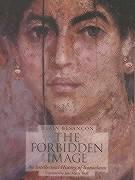The Forbidden Image
BücherAngebote / Angebote:
How did the representation of the divine come to be an issue of philosophical import? Why was the biblical proscription of "graven images" interpreted differently by Jews, Muslims, and Christians? How have modern thinkers and artists addressed notions of the sacred in the realm of art? "The Forbidden Image" traces the dual strains of "iconophilia" and iconoclasm, the privileging and prohibition of religious images, over a span of two and half millennia in the West.Philosophers and theologians have long engaged in intense debate and introspection over the representation of the deity, its possibilities and its proscriptions. Alain Besancon's work begins with a comprehensive examination of the status of the image in Greek, Judaic, Islamic, and Christian thought. The author then addresses arguments regarding the moral authority of the image in both Eastern and Western European Christianity from the medieval through the early modern periods, and analyzes the Roman Catholic Church's rhetorical use of images to educate and stir viewers to piety. Besancon completes "The Forbidden Image" with an examination of how iconophilia and iconoclasm have been debated in the modern period by thinkers as diverse as Calvin, Pascal, Kant, and Hegel, concluding the volume with a discussion of how these theological and intellectual currents have transformed European painting.Now available in English translation, "The Forbidden Image" is an in-depth study of a topic of long-standing philosophical, religious, and artistic significance. This highly acclaimed work will reach a new audience of readers in the fields of intellectual and art history, religion, and philosophy.
Folgt in ca. 15 Arbeitstagen
